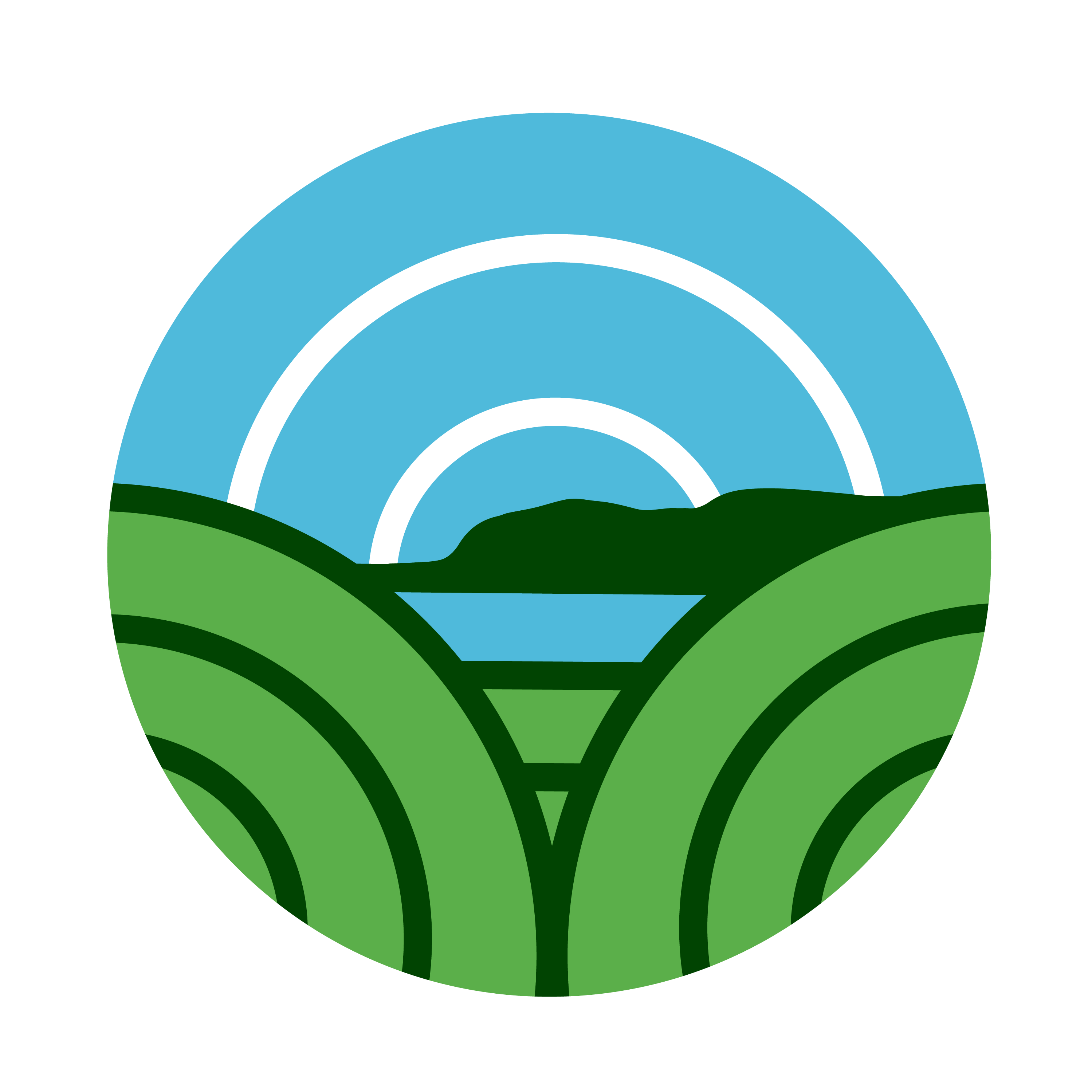Introduction – Farming in Glenshesk Today
Farming in the Glens has changed in recent decades due to a number of factors including automation, young people leaving the Glen, government policies including until recently, the EU Agriculture Policy that have shaped farming practices and the landscape, and the introduction of alternative farming.
For example, from the 1960’s many of the ditches between smaller fields in the Glen were removed to create much larger and more efficient fields to farm. Crops like flax, potato, etc. have disappeared and been replaced by more livestock, forests and other types of farming. Let us look at the various types of farming in he Glen today, starting with the mainstay, sheep.
Sheep
Sheep farming was always the main type of farming in the Glens, and has continued to grow, particularly in light of EU subsidies, (pre-Brexit). The hill farms are ideal for hardy breeds of sheep like Scottish Blackface. Other breeds of sheep are also getting more popular in the Glen including Crossbreds, Cheviots, Blue Leicesters, Black Welsh Mountain Sheep, and also one of the largest flocks in Ireland of Soay’s, one of the oldest breeds of sheep in Europe. Lambing, which is the busiest time of the year for farms in the Glen, tends to be later here than other regions of N.Ireland because of the height of the land above sea level. Some sheep are lambed indoors, but the majority of sheep, which are of hardier breeds, are lambed outdoors. These sheep are brought down from the mountains to fields surrounding the farms just before lambing.



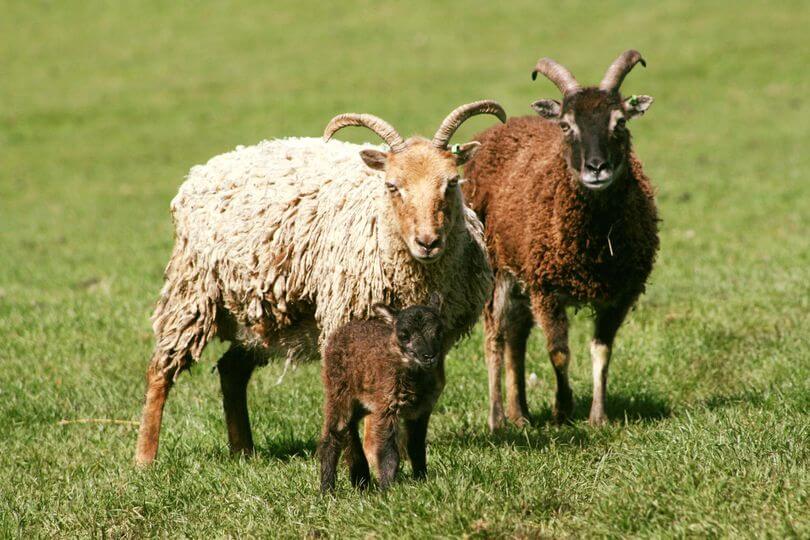
Shearing Sheep:
Apart from lambing, the other busy time for sheep farmers is shearing time, which normally takes place in July and August each year. In the “old days” neighbouring farmers would have come together to hand shear the sheep, helping each other in order to get this exhausting work done. Although it was hard work, it was very much a community effort, and there was plenty of tea and craic to be had when the shearing was taking place. Everyone had their role to play, including not only those who sheared the sheep, but those who caught them, those who trimmed the dirt of the cut fleeces (not a popular job) before rolling them, those who assisted in gathering in the sheep, and those who provided the highlight of the day, refreshments!
In recent years however, there has been a move to tender this work out to professional sheep-shearing contractors who use electric shears, and can within a day or two, shear hundreds of sheep, which previously would have taken much longer to shear. Another difference is the drop in the price of wool, as wool is not in as much in demand as it used to be, competing now with man-made fibres. This has led to little if any profit being made from fleeces as the cost of a fleece is just above or the same as the cost of the contractor to shear them. However there is a move at looking at new uses for wool, including as house insulation.
After the the fleeces are placed in large wool bales, there was always a good send off when the “wool lorry” arrived to take the wool from neighbouring farms to be processed. Neighbours would meet up to help load the large bales, as can be seen by the many different farmers helping in these photos taken at Duncarbit Farm in the late 1970’s.




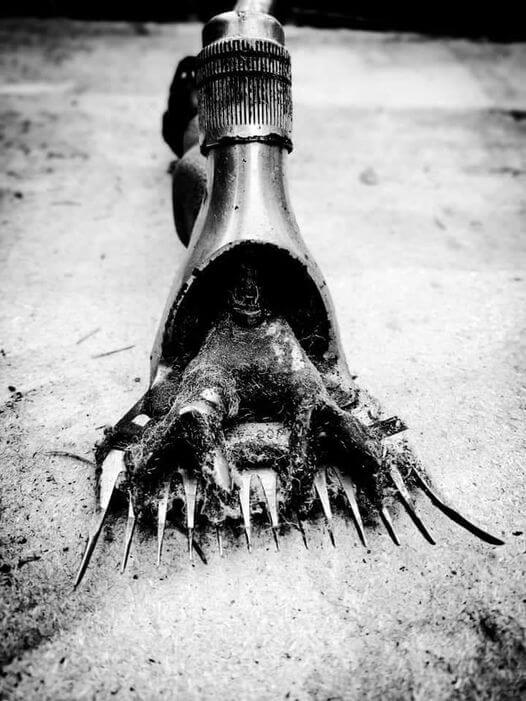
Sheep Scanning


Farming in Glenshesk has also moved very much with the times. One particular innovation is that of scanning sheep which has taken place in Glenshesk since the early 2000’s. Sheep Scanning is a process where ultrasound scanners are used to externally examine a ewe, to see if she is in lamb. We can also identify how many lambs she will bear. The process is carried out for several reasons. We need to know which ewe’s are pregnant. If they are not then the “empty ewe” can be taken off fertile ground and feed, and moved to less productive areas for a few months, which saves on feeding non-productive ewes. Sheep that are found continually not to be in lamb, are often sold on for meat at the next market. Scanning also highlights ewes that are having more than one lamb, which will need extra attention during lambing, never mind feed.
As the sheep are scanned, they are marked with different colours, depending on the number of lambs she has, and later the sheep can be separated so that those having two or more lambs are fed differently from the ones just expecting one.
Sheep of Many Colours!
Anyone coming to the Glen will notice that the sheep are painted different colours, each colour and location of paint unique to each farm, in order that farmers can spot and gather their sheep from a distance. Sheep are also tagged in the ear, but painted fleeces give the farmer a visual indication from a distance, of who owns what sheep. As the majority of sheep are Scottish Blackface, they have horns which could be branded with the farmer’s initials, although this is not done as much today. Anyone who has branded sheep will remember the awful smell from the branding/burning or horns.



Moving Sheep!
For centuries sheep were herded by people on foot, accompanied by the trusted sheepdog, but in recent decades more modern interventions have made life a bit easier, including the ubiquitous 4×4 jeep, and more recently again the introduction and use of the quad which has transformed sheep farming in the Glens.
The go-anywhere quads are now seen as essential farm equipment, and with the addition of small trailers are very useful throughout the farming year.


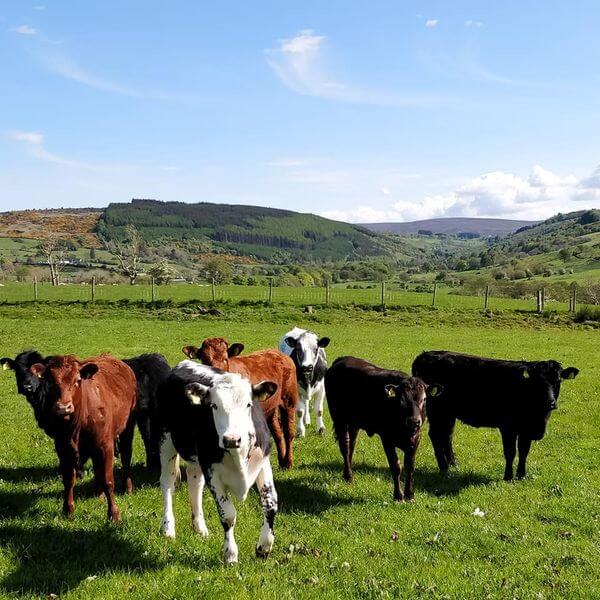
Cattle:
For many hundreds of years, cattle have been farmed in Glenshesk. The land is not suited for dairy farming, but is ideal for beef farming. In the past, many farms would have had at least one or several milking cows, to provide the family with milk, which could have then been used for drinking, producing butter, etc. As a child I remember bringing in the cow from the field which seemed to be on automatic pilot, walking the same route without deviation, day after day into the milking parlour, which of course was done by hand. Farm cats would gather too, in the hope of a donation to their small plate. After the milk was produced and the cow returned to the field, the milk would be strained, and then cooled with a metal copper pipe inserted into a bucket and attached to a cold tap, which ran for an hour or so. The unpasteurised milk and cream which could be scooped from the top on the bucket, was a real treat, but sadly this tradition has disappeared with the introduction of milk rounds with doorstep deliveries of bottled milk. More recently, most milk is now purchased directly from local shops as transport became more readily available.
Some farmers in Glenshesk keep cows, either for producing calves, or for fattening for beef. Several have given up cows completely to concentrate on sheep farming, which is less work. Cattle in the past would have been fed on grassland and in winter, in sheds with hay. In recent decades they would have been fed with silage which would have been cut and placed in siloes, before being taken out using a fork or silage grab, and fed to the animals. More recently again this has been replaced with baled silage which is baled not long after being cut, and then stored, often outside. The bales are fed directly to the animals making it easier to manoeuvre and control the amount fed to them. Livestock meal is often given to cattle too as a supplement.
Alternative Farming:
Over the decades, what has been farmed has changed depending on a number of external factors, like the popularity of particular foods, changes in farm subsidies, climate change, etc. So for example, the growing of flax and potatoes has come and gone, and been replaced with more sheep or different types of livestock, like for example, a hatchery at Blacks, and Turkey Farming at Richard McCaughan’s. However, since the 1980’s farmers have been encouraged to diversify into less traditional types of farming, known collectively as “alternative farming”. Since then we have had many new enterprises in the Glen including the planting and growing of forests, turf farming (Billy Boylan), self-catering accommodation (like Mary Theresa McCaughan’s Glenshesk School accommodation), rearing pheasants (Frank Devlin) and a farm shop like the one Richard McCaughan operates, Ballycastle Farm Shop.
Glenshesk also, like much of the Glens was designated “an area of Outstanding Beauty” in 1988 under the Nature Conservation and Amenity Lands (NI) Order. Glenshesk has a number of ancient forests, and some farmers receive grants to fence around and protect these ancient habitats. The protection of ancient woodland has reshaped our landscape with for example, carpets of wild bluebells appearing in areas which would have been heavily sheep farmed in the past.

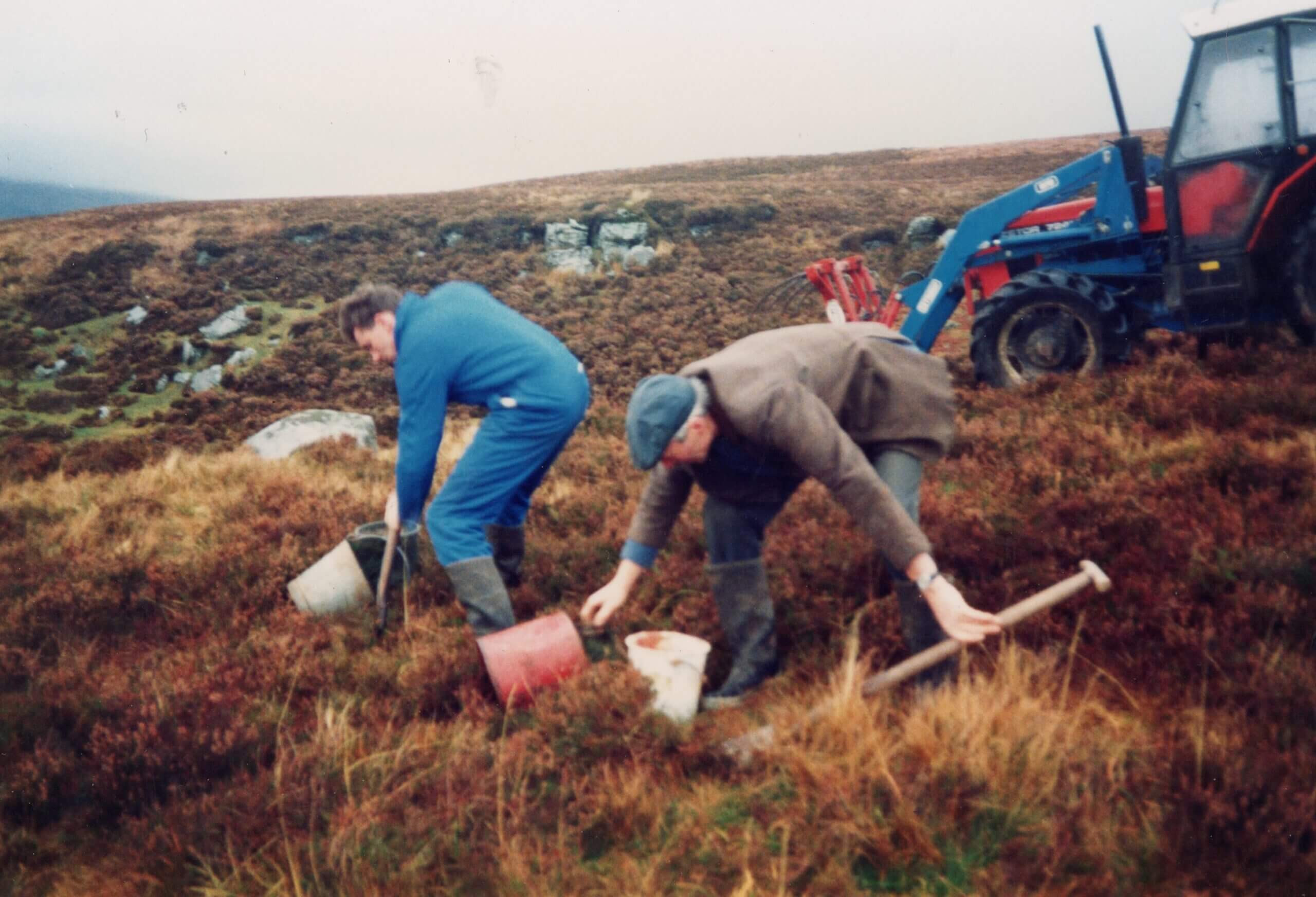




Other Types of Livestock & helpers!
Apart from sheep, cattle, and turkeys, there are other types of farm animals to be found on many farms across Glenshesk including, goats, donkeys, horses, ponies, ducks, hens, and this does not include one of the most important animals, helper and companion on any farm in the Glens, the sheepdog!
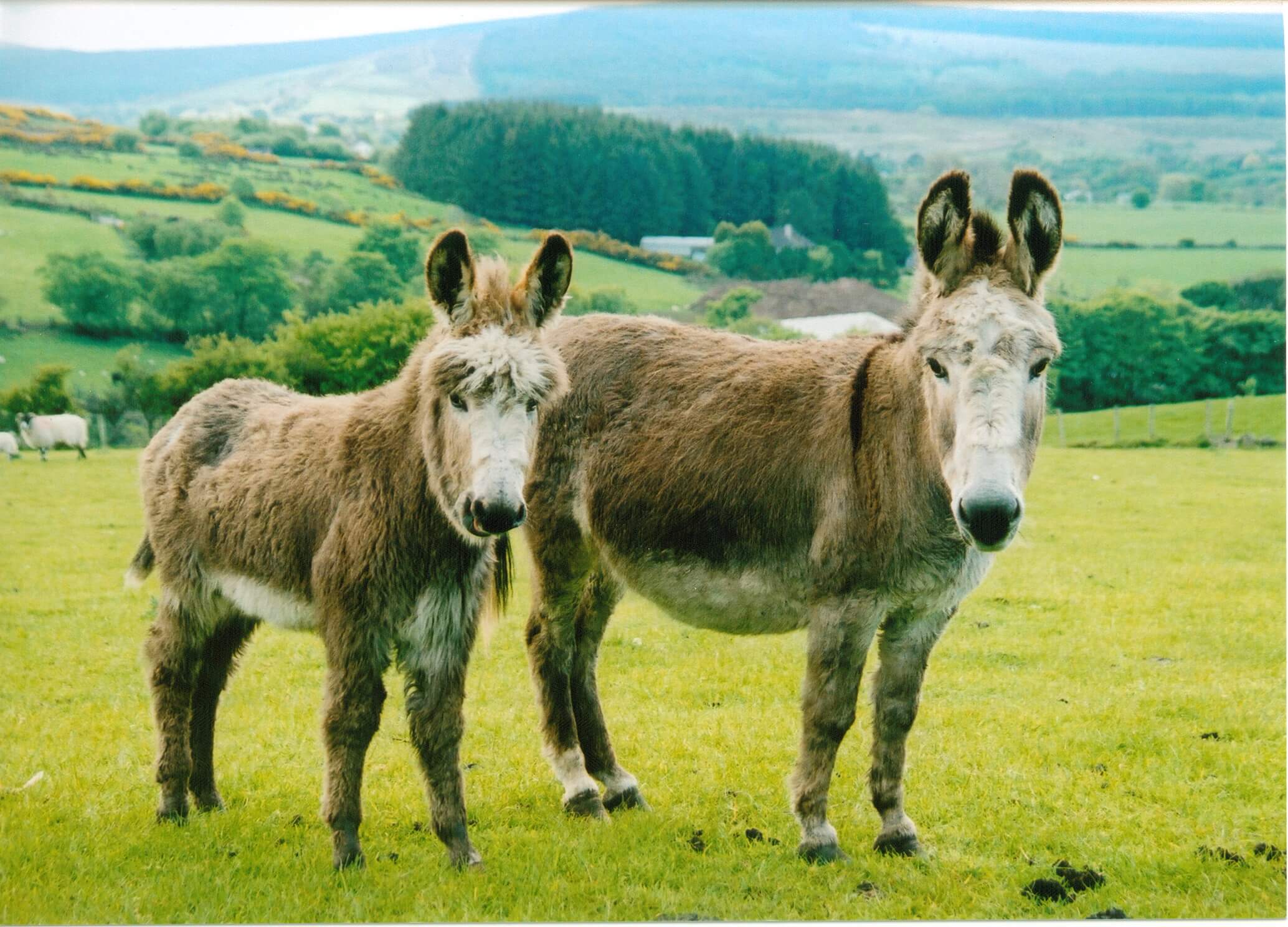

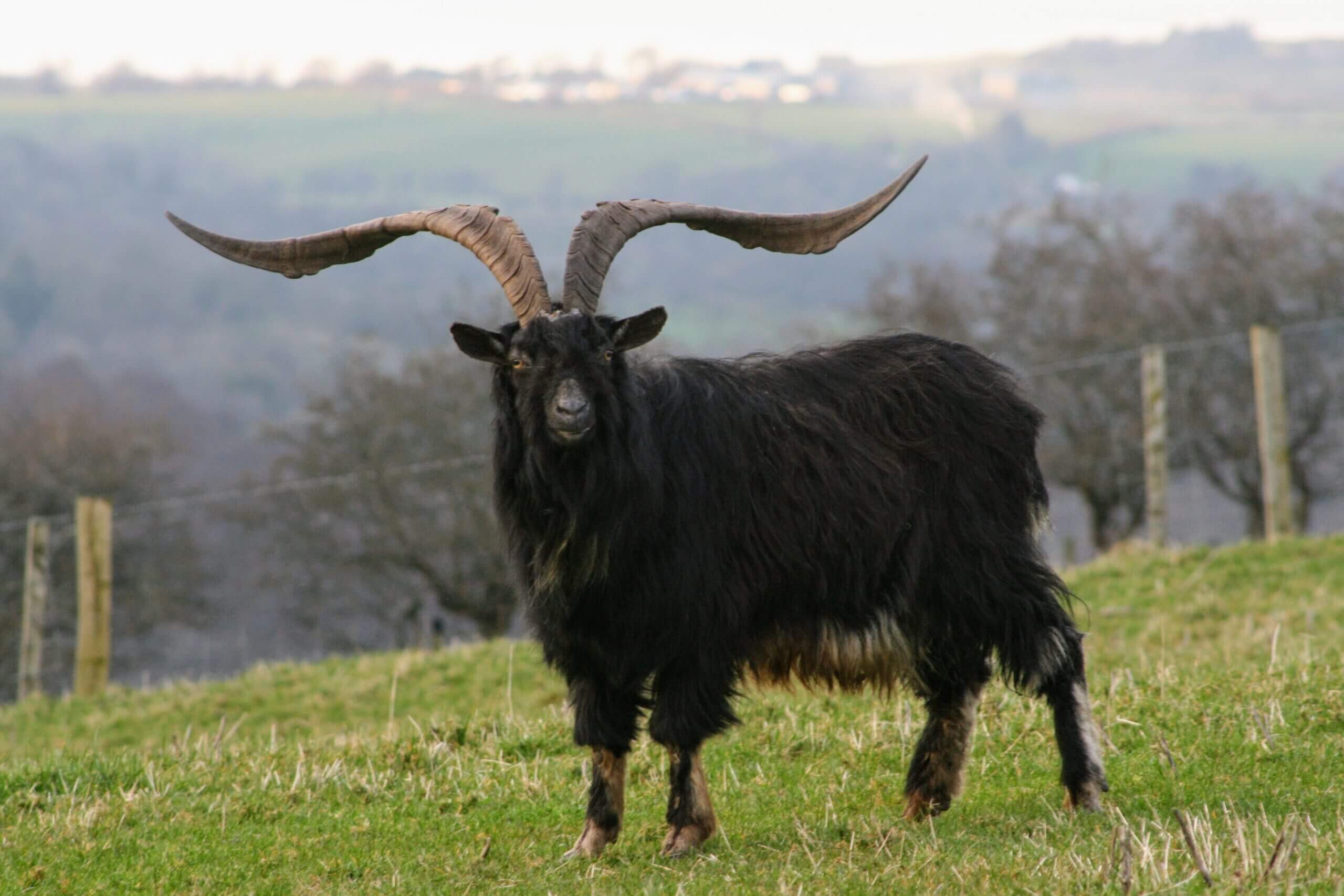
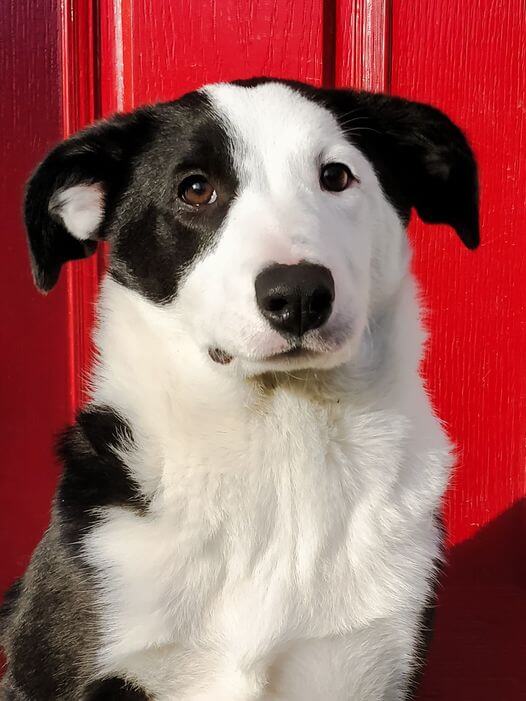
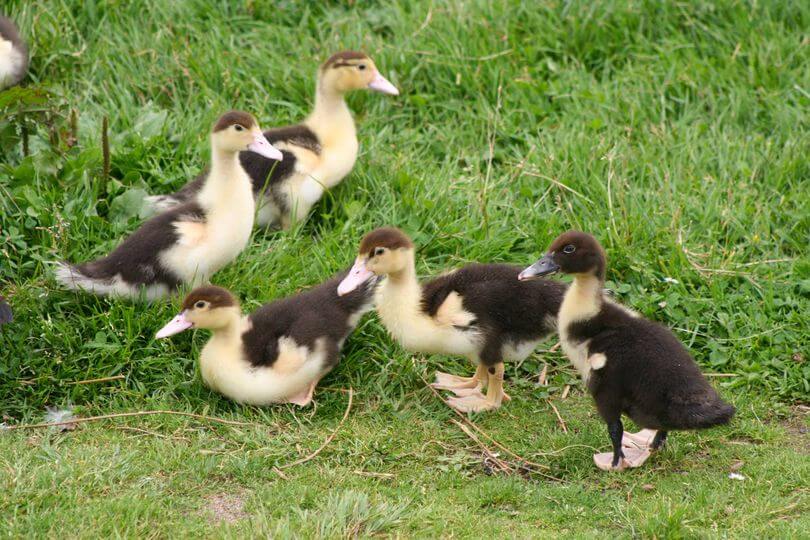

Farm Mechanisation:
Over recent decades the advance in technology has meant that the way we farm today, is a far cry from the intensive manual labour of years gone by. Horses have been replaced by tractors, but it was Harry Ferguson’s patent of the three-point linkage for agricultural tractors in Britain in 1926, that spurred on the progress of farm mechanisation. He had long been a champion of the importance of rigid attachment of the plough to the tractor. The idea did not originate with him, but he led its popularization over many years of development, explaining, and selling. Machinery has grown in physical size (and fields did so too), and more technological advanced tractors and machinery has meant that we rely less and less on the skill of the farmer and more on microchips and Artificial Intelligence.
Another change has been the increased reliance on contractors who complete work in a fraction of a time, moving from one farm to the next, meaning that farmers have less of a need now to purchase bigger expensive machinery like silage wagons and harvesters, which were only used once a year. Some farmers in the 1970’s in Glenshesk pulled their resources together to buy expensive machinery and share between them, but this is no longer needed. As mentioned previously, even the farm 4×4 have been replaced with quads, and one wonders what farming in 20, 50 or 100 years will look like!
If you Click the button attached you will see a video of a contractor cutting silage at the Hollow, Glenshesk.

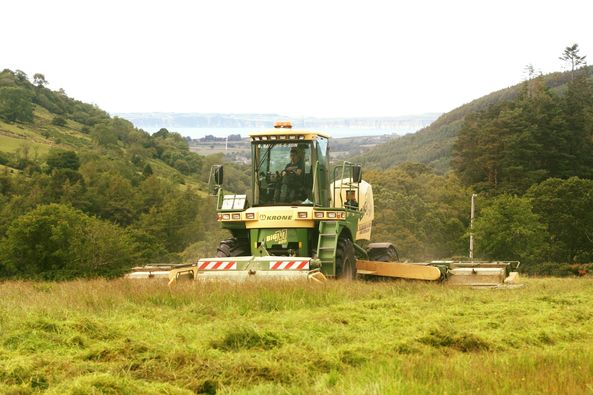
Hay and Silage making:
Grassland farming has shaped the Irish landscape and rural economy. Grass makes up 94% of our agricultural land area and Northern Ireland’s most important crop. Traditionally, livestock farmers have relied on haymaking to produce winter fodder. However, in spite of the efficiency of modern machinery, changes in climate and modern farming methods have meant haymaking has largely been replaced in favour of silage production.
Hay was mown between July and September. In the early days of haymaking the work involved no machinery at all. The farmer would have used a long-handled scythe to cut the long grass. The scythe was an important piece of equipment for a farmer, and often were custom made for the farmer, so rarely were two scythes the same length. The hay was cut into “swaths” and was then left to dry from anything from a few days to a week or two, depending on how good the weather was. During this time the hay was turned or “shaked” by fork so that all sides became dry. B y 1860, horse-drawn hay tedding machines were more widely used to turn the hay.
In the evening, depending on weather conditions, the hay was built into small piles or field cocks. In the northern counties of Ireland, small field cocks of around two feet in diameter, known as lap-cocks, were made. Lapping the hay involved taking a small quantity of hay and forming it into a roll. The round shape of the lap-cocks meant rain tended to drip off the hay rather than soaking into it, whilst the hole in the middle of the lap allowed air to circulate. Lap-cocks were often taken apart and remade over the course of a few days to encourage the drying process.
After drying, the cocks were combined to make ricks or “trampcocks”. The laborious process of moving large amounts of hay was done by looping a rope round a cock and attaching the ends of the rope to a horse’s traces. Although by the latter half of the nineteenth century a hay sweep machine, commonly referred to as a ‘Tumblin’ Paddy’ gained in popularity. The “Tumblin’ Paddy” was a crude but effective piece of machinery, consisting of a row of six tines attached to a beam. Each end of the beam was attached to a draught chain which was connected to a horse’s harness. When enough hay was collected, the Tumblin’ Paddy was tipped over to release its load and the process was started again.
Hay was either stacked on a raised stone base or on a layer of straw or sticks at ground level. When the stack (or hay pake as it was also known in the glens) reached several feet in height, the conical roof was built. The sides of the stack were then smoothed before the stack was thatched with straw and tied down with hay or straw ropes. Stacks were often prone to fermentation and rotting, but by the early twentieth century hay barns were becoming more widely used. The simple hay barn structure of a frame covered with corrugated iron can still be seen in many parts of the glens. One of the unique photographs is of Jack Brown in the townland of Drumacullin, Glenshesk, working on a “hay pake”. Jack is putting the finishing touches to the ropes securing the thatch, made of rushes on the pake (pike).
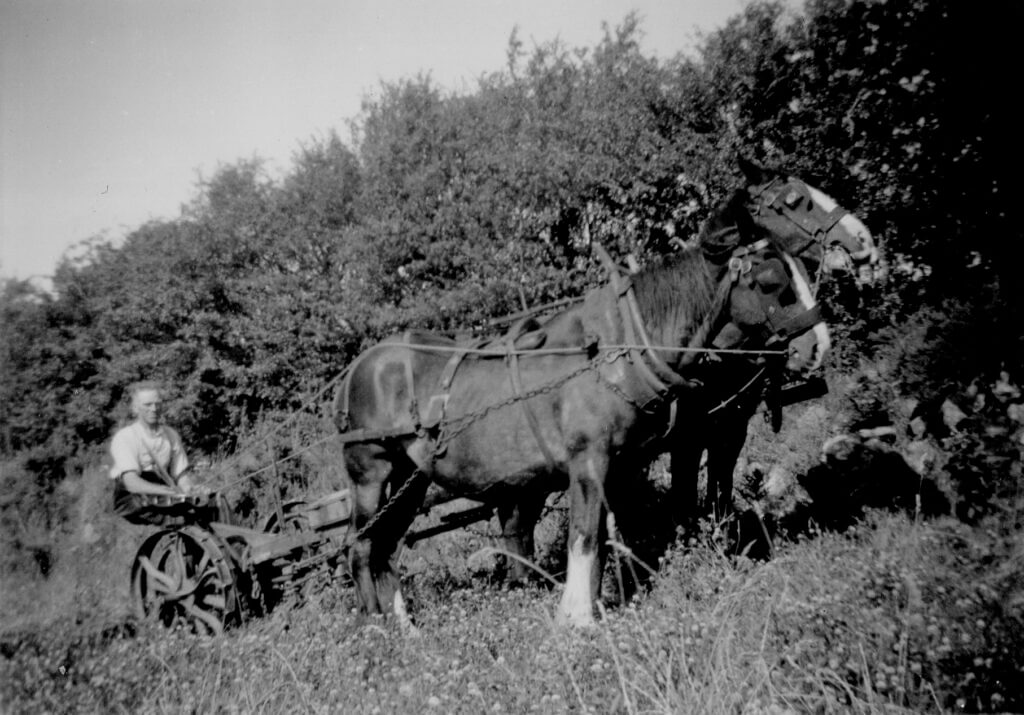

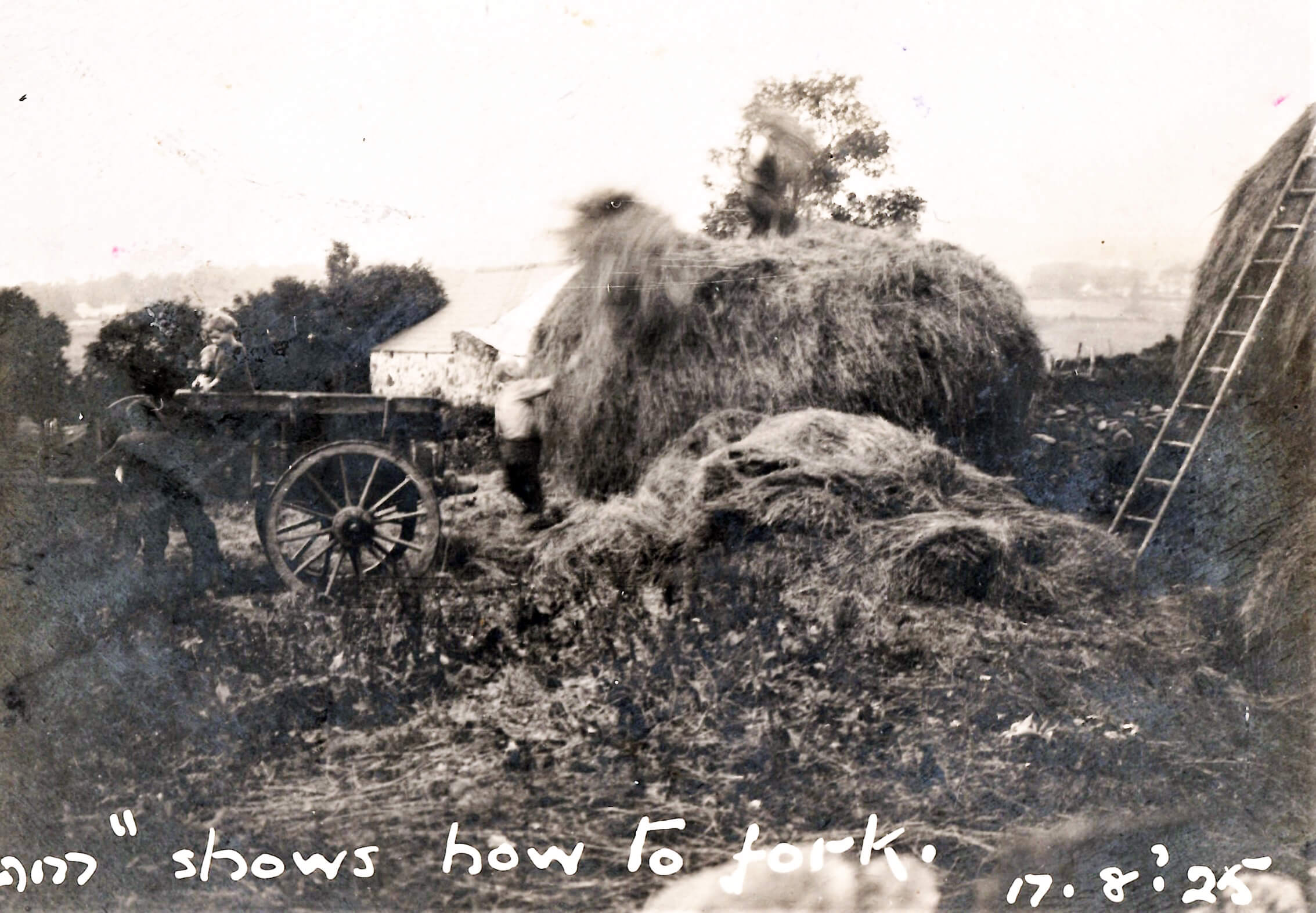

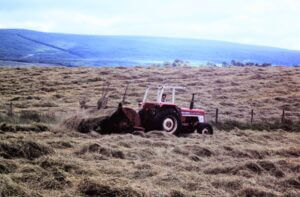
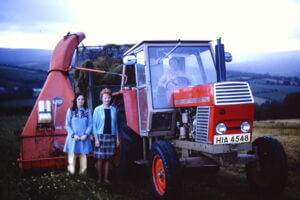
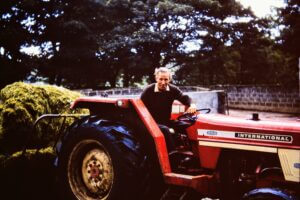

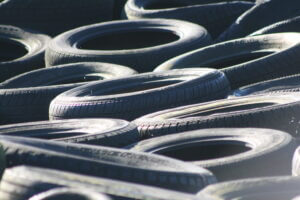

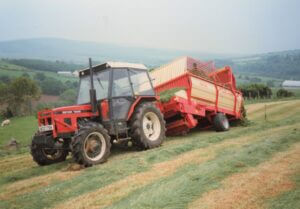
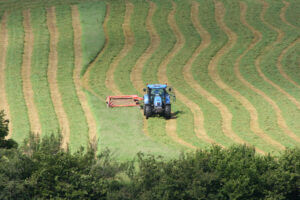
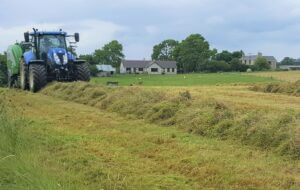
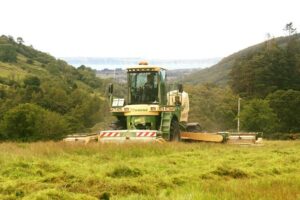
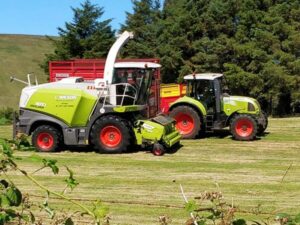
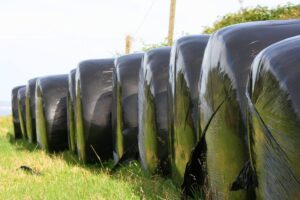
Silage:
In the 1960’s and 1970’s disc mowers and hay balers pulled by tractors were introduced, making the process of haymaking a lot easier, however from this time, silage making started to replace haymaking. Silage had many advantages over hay, including that it did not rely on favourable weather conditions, is less time-consuming and is more cost effective to produce.
In the Glens as in other parts of Ireland, silage making in the early days consisted of a forage harvester cutting the silage directly and blowing it out of a chute of the harvester into a trailer, that was either connected to the harvester directly or to another tractor driving alongside. Once the trailer was full, it would either be unhooked from the harvester and another one hooked in, or if the trailer was separate to the harvester, then it would move away and would be replaced by another trailer waiting alongside. The full trailer would then be taken by tractor to a silo or silage pit where the trailer would tip off its load. The silage would then be buckraked into the silo by another tractor with a buckrake (a large toothed fork) on the back of it. As the silage mounted, there would be a helper or two with pitchforks to smooth out the silage, to ensure it was spread evenly and reduce the possibility of the tractor getting stuck.
In between the loads, the tractor with the buckrake would drive back and forwards over the silage to compact it as much as possible. At the end of the day, a silage cover consisting of a very large black plastic sheet, often the size of several tennis courts, (depending on the size of the pit), would be drawn across the silage to cover it, and then car and tractor tyres placed on top to hold it down and kept as tight as possible. This would take a number of people to do, as the cover was so large. This was often a smelly task as the cover was often quite odorous! The cover would then be taken off the following morning, when silage production started again. At night time, after the harvester would have left the field for the day, the tractor with the buckrake would have continued to drive backwards and forwards for a few hours on the silage, to compact it further and get rid of as much air as possible, thus helping the silage not to ferment as much during the coming months. In later years this task was dropped, as the thinking then was to get the cover on quickly, rather than spend time compacting it. During the winter months the cover of the silo would have been rolled back bit by bit, and silage removed from the face using either a fork and a barrow or small trailer, or more likely and efficiently, by a silage grab on the front of tractor. The silage would then be placed in front of the livestock to be fed.
As mentioned previously, at a time in Glenshesk, several farmers bought much of the silage production machinery together, as it was quite expensive, and as it was really only used for a few weeks each year, it made sense to do this. As well as buying the machinery together, they would help each other out, taking in the silage.
Advances in mechanisation in the 1980’s led to some introducing the “silage wagon” in Glenshesk, where silage was cut first by a mower and put in rows, before the silage wagon lifted it. This was an advanced large trailer that could lift the silage directly from the ground and pack it into it’s large trailer, and as the silage was being compacted as it was lifted, it was able to take several normal silage trailer loads in one. Once the silage wagon was full, it drove to the silo pit where the back trailer gate opened and the moving floor unloaded the silage, ready for the buckraker to do his work.
In recent decades however, there has been a number of major advances leading to silo pits, buckrakers and the like no longer required. Instead, large forage harvesters with the latest technology at hand including computer chips, now either directly cuts the silage and bales it, or after the grass is cut by a mower and placed in rows, it is baled by a silage round-baler. There are several advantages with this method. For example, the baled silage can be left in the corner of the field where it is cut or taken to any location throughout the farm to be used at a later time; the farmer is no longer tied to taking the silage to the silage pit. Also, as the bales are all the same size, it makes feeding animals easier as the fodder can be rationed better, and can be dropped easily into a found feeder. The bales also do not produce the same amount of silage effluent as would have resulted from a silo; this liquid is toxic to fish and leakages into rivers would have resulted in fish kills.
The plastic wrapping at one time would have caused pollution, however there are several schemes operating to encourage farmers now to gather used silage wrapping for recycling. Also, moving away from using old tyres is good, as it ensures that garages and car-breakers now pass them on for recycling, rather than lying about on farms for decades. It should be noted too that with the introduction of quite advanced farm machinery, and with a large price tag to match, local farmers no longer actually buy the machinery or are involved in the production of the silage. Instead, specialist contractors with the latest state of the art machines are contracted in to do the work, moving from one farm to the next during the silage season.
As much of this machinery is large, it can be challenging on the windy roads in Glenshesk, not to mention operating on some of the smaller fields, but farmers in recent decades have put smaller fields together, as the physical landscape adapts to modern farming practices. However, one disadvantage of silage production is that unfortunately Northern Ireland’s bird population has suffered as a result of the switch. Silage crops are cut earlier and more frequently than hay but lowland farm birds like the corncrake need vegetation taller than 20cm. Corncrake numbers declined by 75% between 1972 and 1991 as silage-making became more widespread.
